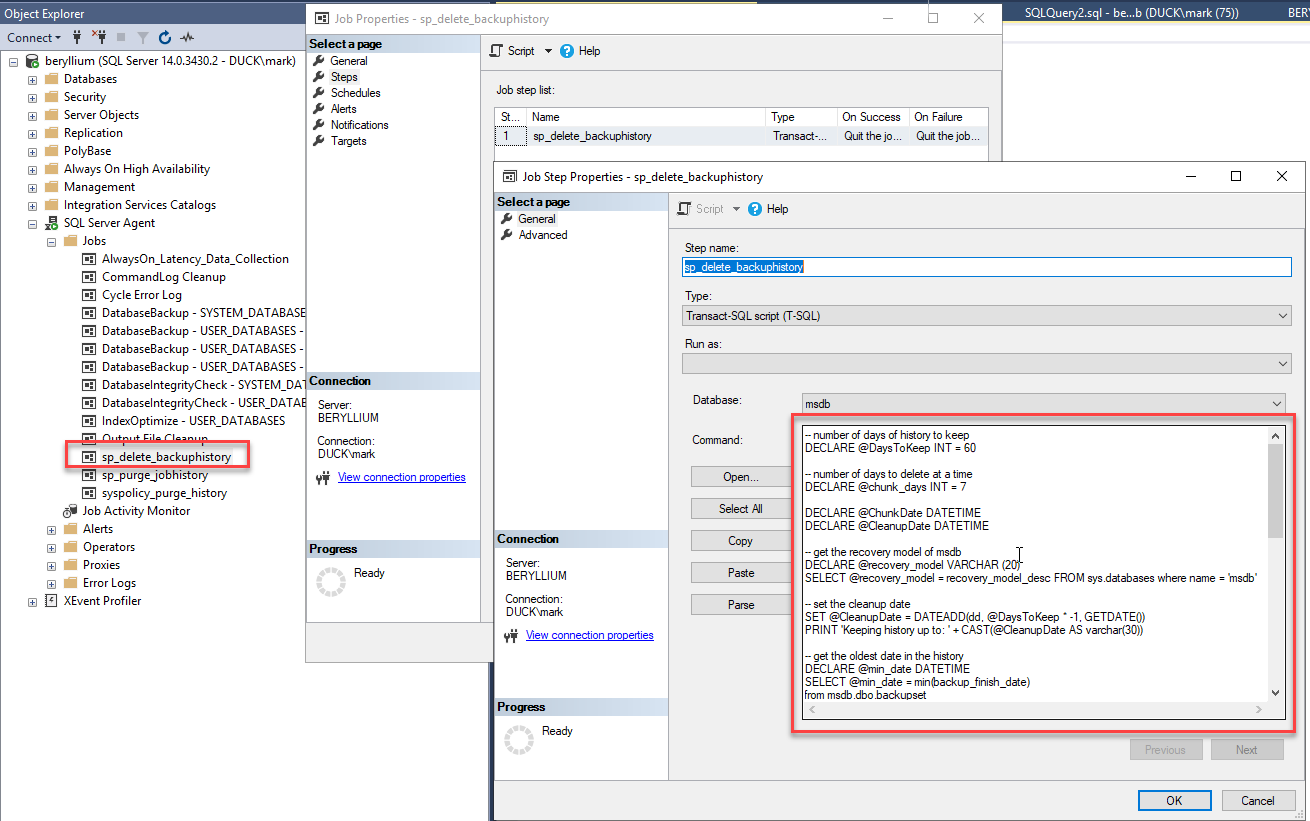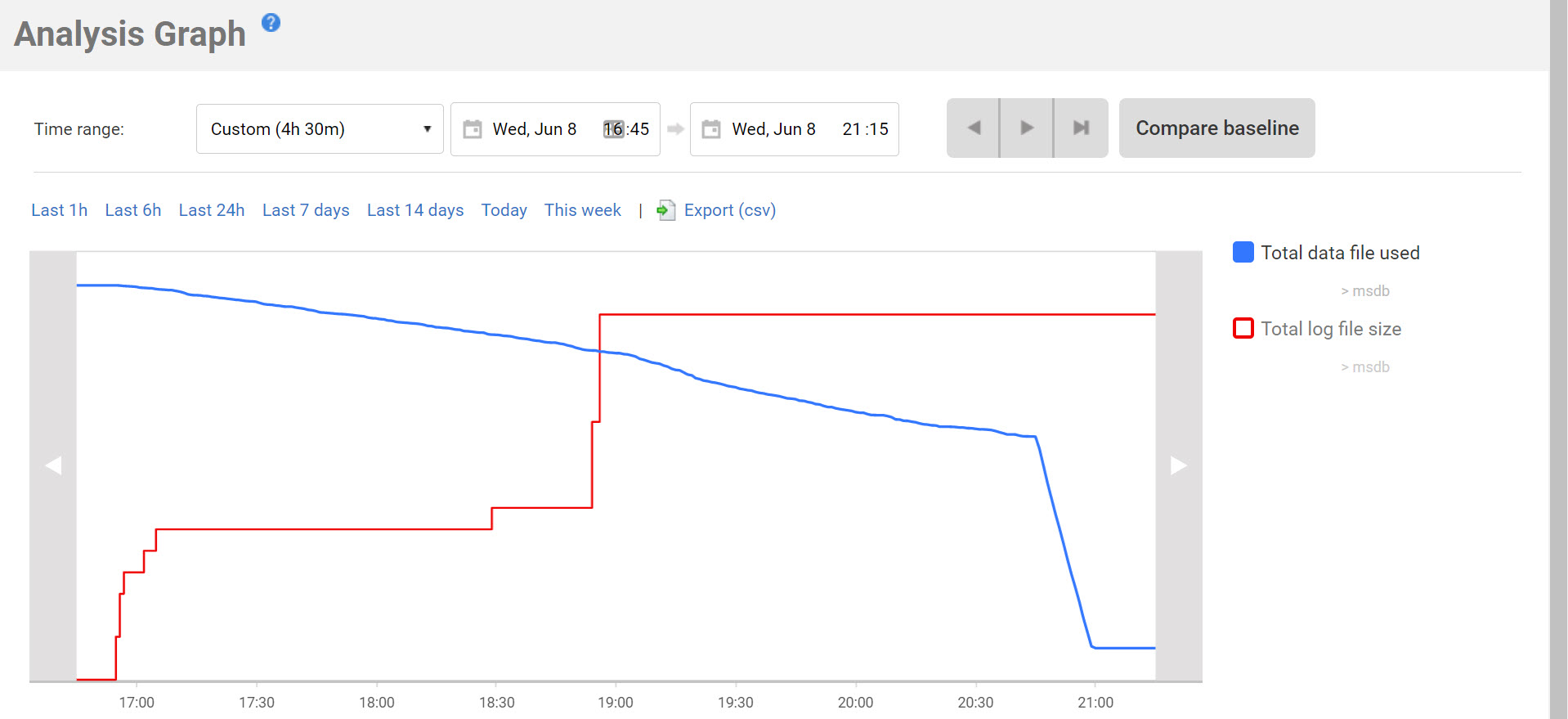Clear Msdb Backup History Safely
I came across a situation this week where the msdb database had grown to a large amount (130 GB). This is the largest I’ve ever seen msdb and is a result of no scheduled maintenance of the backup history for several years.
msdb.dbo.sp_delete_backuphistory
Why not just run msdb.dbo.sp_delete_backuphistory I hear you say?
Well, when the history tables have over 100 million rows each and the database files are on the C drive, running this proc will require huge amounts of transaction log space. Each delete statement will be cleaning out millions of rows per table in a single transaction.
The Ola Hallengren Maintenance Solution includes a SQL Agent job to run this proc, however I would recommend for large msdb databases, the job schedule command is changed from the default.

Remove data in batches
The best way to do this is to remove the data in batches and commit the data so that the log can either be backed up and truncated, or in the case of SIMPLE recovery model, just truncated after a CHECKPOINT. As a DBA you will know that a CHECKPOINT flushes dirty pages from memory to disk which means the transaction log records are no longer required in case of sudden failure.
The built-in stored procedure msdb.dbo.sp_delete_backuphistory accepts a parameter @oldest_date. If we find out what the oldest record is in the msdb.dbo.backupset table we can work backwards from there in chunks and delete the data from oldest to newest up to a limit.
I have changed the script in the Ola Hallengren sp_delete_backuphistory SQL Agent job to this:
https://github.com/markallisongit/Scripts/blob/main/CleanUpMsdbBackupHistory.sql
Feel free to play around with the variable defaults to suit your system. I ran this query to decide on a DaysToKeep of 60 days and chunk_days of 3 days. You may find that if you have a lot of databases with frequent transaction log backups, that it is kinder on the transaction log if you delete one day at a time and set @chunk_days to 1.
|
|
Run time
I ran this query and it took three hours to clean out msdb on a system with three years history and fifteen minute transaction log backup frequency.

Of course, once the process has finished there will be lots of empty space in msdb. With the housekeeping job running frequently in a schedule, that space is no longer needed, so use DBCC SHRINKFILE to reclaim the disk space.
Obviously do this in chunks so as not to blow up the msdb transaction log again or lock msdb for an extended period causing your transaction log backups to stall.
10 GB chunks should be enough, something like this:
|
|
Another way
The other way I considered was to re-write the msdb.dbo.sp_delete_backuphistory procedure with a parameter called @batch_size or something, but that would have required much more work and testing. It’s best to wrap around a script that is proven in production than to take the risk of re-writing it.